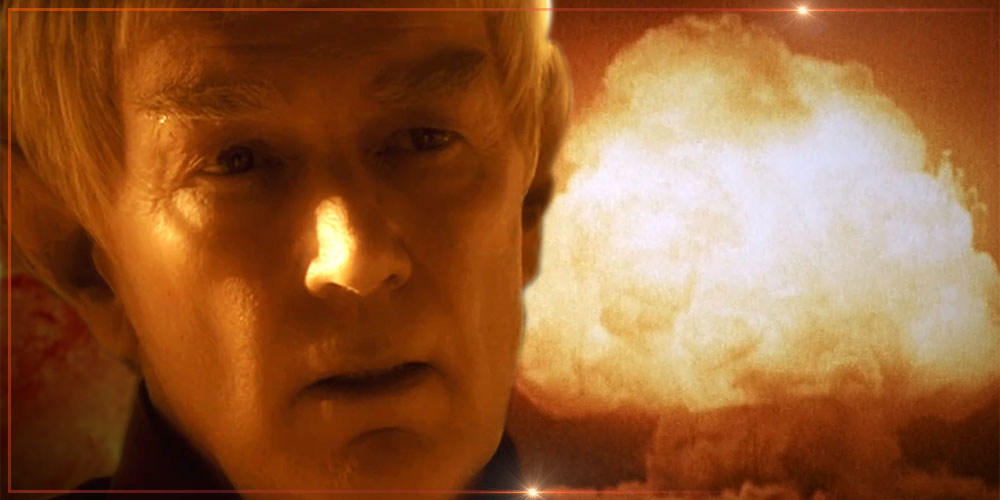Hey guys, Tyler here. So, one of the most interesting aspects of the Star Trek universe is its hidden lore—the historical information that permeates the Trek timeline and manifests on screen in archaeological discoveries and time travel escapades alike. I’ve examined several of Star Trek’s ancient civilizations in other videos of mine, but today, I want to talk about the origins of one of Star Trek’s most iconic races: the Vulcans. I’ve wanted to make a video about Vulcan history—prehistory, particularly for quite a while. With some of the recent developments in the franchise regarding this iconic species, I think the timing is just right.
The Vulcans are a race whose recorded history spans thousands of years, much like many of the other major races featured in the show. But their development as a society, and specifically the way they allegedly came into existence, is somewhat unique among the various alien civilizations we get to know in Trek. From their devastating nuclear exchanges to the Romulan diaspora to some possible tampering in their early evolution, Vulcan history is quite the epic story, one that casual fans might not have taken as deep a dive into as I have in doing research for this. So, let’s talk about Star Trek’s Ancient Civilizations: The Early Vulcans.
Like the other humanoid races in Star Trek’s Milky Way Galaxy, it is suggested that Vulcans originally arose from the seeded DNA sequence of an ancient race that lived 4.5 billion years ago. But in terms of what makes Vulcans unique, it’s another ancient race that supposedly had a more direct influence. In The Original Series episode “Return to Tomorrow,” a landing party of the Enterprise crew interacts with the sole surviving members of an unnamed civilization whose minds have been transferred to spherical receptacles beneath the surface of their homeworld.
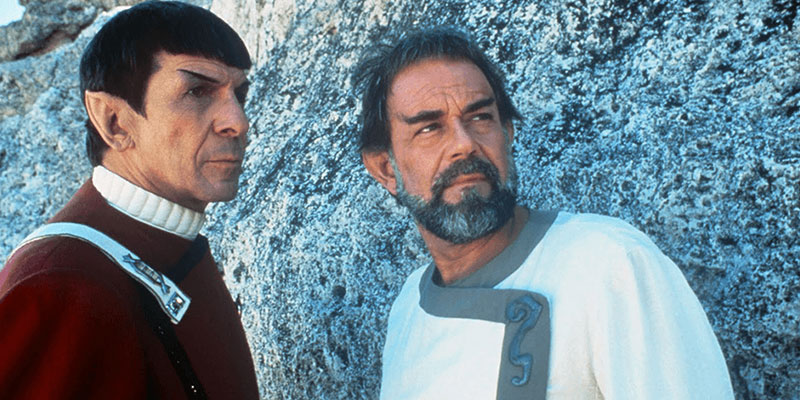
One of the members of this species, Sargon, proclaims that his people had travelled the stars some six hundred thousand years ago and that humans and Vulcans may be among their descendants. Astrobiologist Lt. Commander Ann Mulhall quickly corrects the record, clarifying that all evidence indicates humans evolved independently, but Spock chimes in and says that Sargon’s claim could “explain some elements of Vulcan prehistory.”
This is a curious remark that is not further ruminated upon in the episode as the team deals with the situation. But this tidbit does receive a nod in the season 1 finale of Star Trek: Picard, in which the Romulan Narek theorizes that the apocalyptic story of Ganmadan is not a prophecy but history that possibly predates the arrival of Vulcans on their planet. Though Ganmadan is a part of Romulan mythology, the Romulans and Vulcans’ shared ancestry means that their two histories are intertwined.
The veracity of this Romulan myth is, of course, rather muddied, but this subtle nod towards a more complex story of Vulcanoid origins does lend credence to the idea that their evolution was not as straightforward as might initially seem. Sargon’s species is not explicitly named in the canon, but script notes for “Return to Tomorrow” refer to his people as the Arretians or Arretans, coming from the planet Arret. Christopher L. Bennett’s novels Watching the Clock, The Buried Age, and Ex Machina refer to them as the Sargonians, a name given to them by Federation archaeologists.
The Sargonians are said to have formed a massive empire in the distant past, ruling for a hundred thousand years. They terraformed and colonized several worlds and mentored a number of junior races. The novels describe their empire as the union of two separate species, the other being an ancestor of the Deltan race, who we are introduced to in Star Trek: The Motion Picture. As the novels and “Return to Tomorrow” indicate, the Arret Empire befell a cataclysmic war that stripped Sargon’s planet of its atmosphere. This was no ordinary nuclear age, but rather the trappings of a greater conflict Sargon says humans could scarcely comprehend.
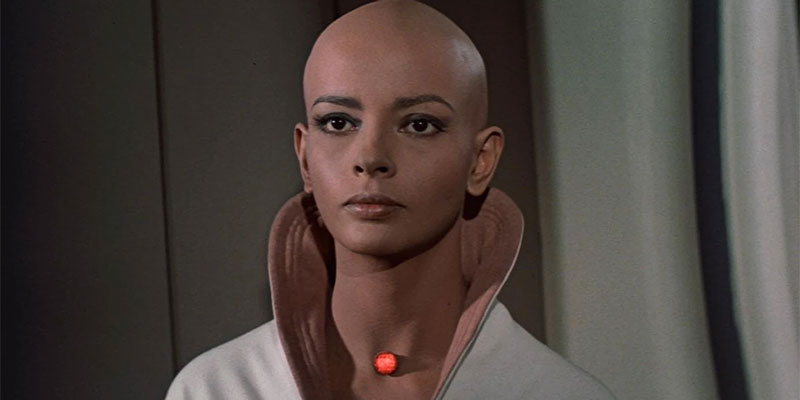
It’s not entirely clear if Sargonian settlers on Vulcan are supposed to have acted as a proverbial “Adam and Eve,” or if the Sargonians introduced mutations into the proto-Vulcan genome a la the ancient astronaut hypothesis. If there are truly “missing links” in the Vulcan evolutionary line, either could be the case: we don’t know the full details of whether there were Stone Age Vulcanoid hominids much like the various hominid cousins of Homo sapiens on Earth. Other sources such as Star Trek Online also corroborate the idea that there is debate over the Vulcans’ true origins.
What IS clear, in any case, is that whatever species first evolved on Vulcan, they would have to deal with a rather hostile environment. While it’s likely that the planet has gone through geological shifts and probably once had a lusher climate, it’s understood that the planet has been almost entirely covered in the desert for most of Vulcan’s recorded history. The 1988 Trek novel Spock’s World by Diane Duane suggests that a solar flare from 40 Eridani caused a massive climactic shift early in Vulcan evolution, and if something like this really were to have occurred, that could have provided an opportunity for the Sargonians to introduce some adaptations such as the inner eyelid or their signature pointy ears to help early Vulcans better survive. This is entirely speculative, of course, and generally, I don’t like to rely on “Ancient Aliens” type interventions to explain evolutionary gaps even of fictional races, but as I mentioned in my recent video about the Xindi, Trek’s track record with accurate portrayals of Darwinian selection is not exemplary.
As far as cultural evolution, we are often told in various series that Vulcans used to be quite barbaric, even by Earth standards. This makes sense in the context of pre-Surak times, as Vulcan emotions are said to be strong; their passions run even deeper than what we’d expect based on their behaviour. But their capacity for controlling and suppressing these emotions is just as great. As early as 2700 BC, according to Spock, Vulcans had an “aggressive, colonizing period;” while some Vulcans had begun the practice of suppressing their emotions around this time, for millennia, war and conquest would rage on. They developed space travel by the 9th century BC according to Enterprise, establishing outposts such as the one on P’Jem. They also had fewer encounters with hostile races as there were fewer warp-capable species at this time.
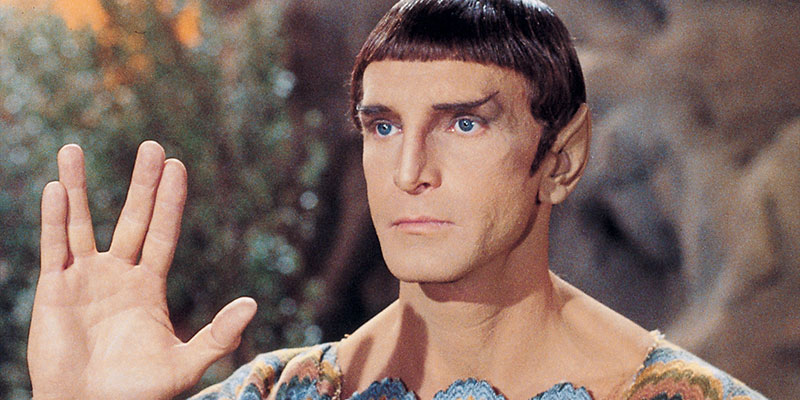
By the 4th century AD, however, Vulcans’ rampant emotions and hostile warrior culture threatened to tear their society apart. Atomic weapons as well as psionic weapons such as the Stone of Gol, which amplified violent thoughts into destructive energy, were detonated across the planet. But out of this nuclear exchange came the philosopher Surak, who helped usher in the so-called Time of Awakening and transformed Vulcan society through the embracing of pure logic. Those who rejected Surak, referred to as “Those Who Marched Beneath The Raptor’s Wing,” left Vulcan and eventually founded the Debrune and Romulan civilizations. According to Ambassador Soval, it took nearly 1500 years for Vulcan society to rebuild itself before they returned to the stars. Their subsequent encounters with species such as the Andorians, Tellarites, Klingons, and numerous others are referenced throughout Enterprise, and the rest, as they say, is history.
It’s a story of how a society marked almost exclusively by violent and destructive acts for almost two and a half millennia was eventually able to overcome its aggression and embrace a more peaceful lifestyle. It’s also a story of how the devastation of nuclear war kept Vulcans from returning to space for a period several times as long as it took humans to recover from World War III. Humans in Star Trek are generally regarded as being on the faster end of the spectrum when it comes to their rate of technological advancement and overall capacity for change, even in the postcapitalist age of the early-to-mid-22nd century. I think there’s an easy explanation for why it took Vulcans longer to reestablish themselves.
We see throughout the franchise that Vulcan science is sort of peculiar. What I mean by this is, Vulcans—who are still, mind you, a religious people—are dogmatic as hell. Not only does T’Pol steadfastly defend the Vulcan Science Directorate’s assertion that backwards time travel is impossible, even in the face of countervailing evidence (nay, proof), but even in the 32nd century as we see in Discovery, the belief among Vulcan scientists that they caused The Burn leads them to suppress the SB-19 data, preventing further research on this post-dilithium form of warp travel. All of this is to say, Vulcan “logic” is often axiomatically employed in defence of preconceived notions, and challenging viewpoints are often dismissed out of hand without further investigation. In a nutshell, while the Vulcans had Surak, they also could have used a Socrates.
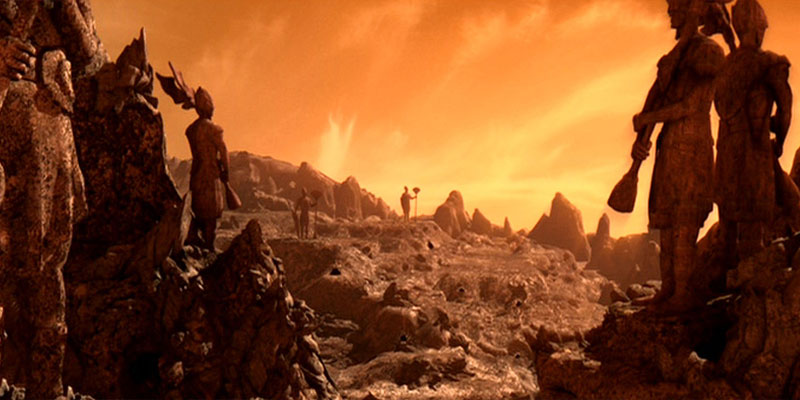
This predisposition against pursuing certain out-of-the-box lines of thinking probably hinders Vulcan scientific and cultural progression in their post-Surak history, even over a thousand years in the future. It’s this anathema to the rapid development that also likely keeps Earth’s warp program from “taking off” earlier than it did. Of course, I should clarify that this doesn’t necessarily mean that the Vulcans were physically incapable of leaving their planet immediately following the Time of Awakening, as the offshoot that became the Romulans had to have gotten off-world somehow. Soval’s dialogue in Enterprise isn’t explicitly clear about whether Vulcan’s nuclear wars set them back technologically since that might cause a contradiction in canon. But I think the most straightforward interpretation is that it took the Vulcans 1500 years to decide they were ready to rejoin the interstellar stage, just as they believed humans were too young and impulsive to do the same. So when they took flight again in the 19th century, it was only because that’s when they deemed themselves worthy enough to do so. But in the meantime, they would face lingering questions about their identity as a species, questions that would continue to cause cultural divide even far into the future.
Some of the connections I’ve made are rather speculative, I’ll admit, but I think based on the explanations and background information we’ve been given throughout the shows, this perspective on Vulcan history is fairly solid. I, of course, welcome any comments on the lore and theories I’ve presented, so be sure to leave those down below.
Thank you all for watching! If you enjoy content like this, becoming a patron at the link below it is a great way to support me.
Watch The Latest Video By Orange River Media Below
Don’t forget to subscribe, and I’ll see you next time! Live long and prosper.
You can find Orange River Media at the links below
- YouTube: https://www.youtube.com/orangeriver
- Twitter: https://www.twitter.com/orangerivernw
- Instagram: https://www.instagram.com/orangeriver.nw
- Facebook: https://www.facebook.com/orangerivernw
- Patreon: https://www.patreon.com/orangeriver

